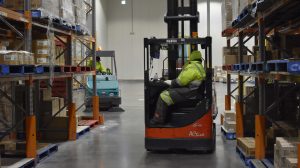The Hazards in Cold Storage: Understanding the Risks
Introduction
Cold storage facilities play a vital role in preserving perishable goods, such as food and pharmaceuticals, by maintaining low temperatures. While these facilities are essential for ensuring product quality and safety, they also present various hazards that need to be carefully managed. This article aims to shed light on the potential risks associated with cold storage and provide insights into effective safety measures. What is the hazard in cold storage?
Understanding Cold Storage Hazards
1. Temperature Extremes
One of the primary hazards in cold storage is the extreme temperatures. These facilities are designed to maintain sub-zero temperatures, typically ranging from -10°C to -40°C (-14°F to -40°F). Working in such environments can lead to frostbite, hypothermia, and other cold-related injuries if proper precautions are not taken. Employees must be equipped with insulated clothing, gloves, and appropriate footwear to protect themselves from the extreme cold.
2. Slippery Surfaces
Maintaining low temperatures in cold storage often results in condensation, leading to wet and slippery floors. This creates a significant risk of slips, trips, and falls. Workers must be vigilant and use slip-resistant footwear to minimize the chances of accidents. Regular cleaning and drying of floors, along with the use of anti-slip mats, are crucial safety measures in cold storage facilities.

3. Exposure to Hazardous Substances
In addition to temperature hazards, cold storage facilities may also house various hazardous substances. For example, some refrigeration systems use ammonia, which can be toxic if leaked into the air. Employees working in or around these areas should receive appropriate training on handling hazardous substances, including the use of personal protective equipment (PPE) such as respirators and goggles. Regular inspections and maintenance of refrigeration systems are essential to prevent leaks and ensure a safe working environment.
4. Equipment Malfunctions
Cold storage facilities heavily rely on refrigeration systems and other machinery to maintain the desired temperatures. Equipment malfunctions can result in temperature fluctuations or complete failure, posing risks to the stored goods and the workers. Regular maintenance and monitoring of equipment are critical to identify and address any issues promptly. Additionally, having backup power sources and contingency plans can help mitigate the impact of equipment failures.
5. Electrical Hazards
Electrical systems are a crucial component of cold storage facilities, powering the refrigeration units and other equipment. However, the combination of low temperatures and electrical systems can create unique hazards. Exposed wiring and faulty electrical connections can lead to electrical shocks or fires. Proper insulation, grounding, and regular inspections by qualified electricians are vital to prevent electrical accidents.
6. Ergonomic Challenges
Working in cold storage facilities often involves physically demanding tasks, such as lifting heavy containers or pallets. The cold temperatures can cause muscles to contract, increasing the risk of strains, sprains, and other musculoskeletal injuries. Employers should provide proper training on safe lifting techniques, encourage regular breaks, and implement ergonomic principles to minimize the strain on workers’ bodies.
Mitigating Cold Storage Hazards
1. Comprehensive Training
Proper training is crucial to ensure that all employees understand the hazards associated with working in cold storage facilities. They should receive training on temperature-related risks, safe handling of hazardous substances, emergency procedures, and proper use of personal protective equipment. Regular refresher courses and safety drills can help reinforce the knowledge and preparedness of the workforce.
2. Adequate Personal Protective Equipment (PPE)
Providing employees with the necessary personal protective equipment is essential to mitigate the risks of cold storage hazards. This may include insulated clothing, gloves, headgear, and footwear designed for cold environments. Employers should ensure that PPE is readily available, properly maintained, and regularly replaced when necessary.
3. Regular Inspections and Maintenance
Routine inspections and maintenance of cold storage equipment and facilities are crucial to identify and address potential hazards. This includes checking refrigeration systems, electrical wiring, emergency alarms, and fire suppression systems. Maintenance schedules should be established, and any issues discovered during inspections must be promptly resolved by qualified personnel. https://commgen.com.au/product/tretight-inflatable-dock-seals/

4. Proper Signage and Communication
Clear and visible signage throughout the cold storage facility is essential to remind employees of potential hazards and the required safety protocols. This includes displaying warning signs for slippery floors, electrical hazard areas, and designated emergency exits. Effective communication channels, such as regular safety meetings and open lines of communication between management and employees, can also contribute to a safer working environment.
5. Emergency Preparedness
Cold storage facilities should have well-defined emergency procedures in place, including protocols for evacuation, fire suppression, and medical emergencies. Regular drills and simulations should be conducted to ensure that all employees are familiar with the emergency response plan. Adequate first aid supplies and trained personnel should be available on-site to provide immediate assistance in case of injuries or illnesses.
Conclusion
While cold storage facilities are crucial for preserving perishable goods, they come with inherent hazards that must be properly managed. By understanding the risks associated with extreme temperatures, slippery surfaces, hazardous substances, equipment malfunctions, electrical hazards, and ergonomic challenges, employers can implement effective safety measures to protect their workers and maintain the integrity of stored products. Through comprehensive training, proper equipment, regular inspections, and emergency preparedness, the hazards in cold storage can be mitigated, creating a safer working environment for all involved. What is the hazard in cold storage?

Recent Comments